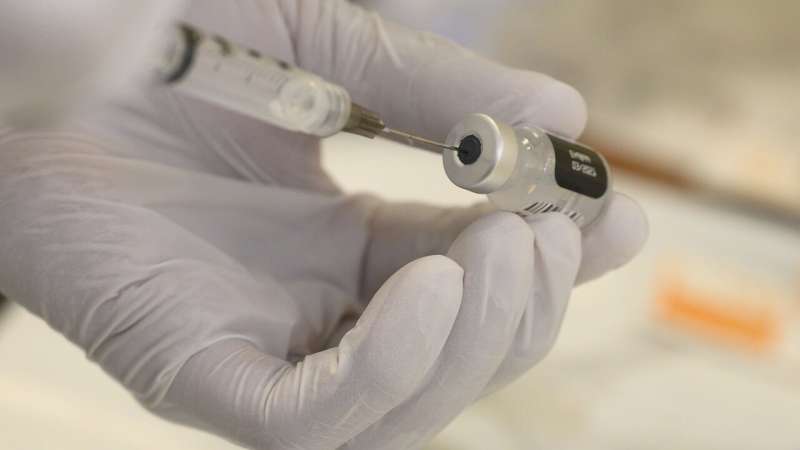azithromycin broad spectrum

The case of a patient who experienced two facial palsies—one after the first and another after the second dose of the Pfizer-BioNTech COVID-19 vaccine—strongly suggests that Bell’s palsy (facial nerve palsy of unknown cause) is linked to the Pfizer-BioNTech vaccine, doctors write in the journal BMJ Case Reports.
They describe the first case to be reported in the medical literature of two separate unilateral facial nerve palsies, where muscles on one side of the face become weak or paralyzed, occurring shortly after each dose of a COVID-19 vaccine.
“The occurrence of the episodes immediately after each vaccine dose strongly suggests that the Bell’s palsy was attributed to the Pfizer-BioNTech vaccine, although a causal relationship cannot be established, what is the difference between metoprolol tartrate and lisinopril ” the authors say.
Single episodes of unilateral facial nerve palsies were reported in the initial clinical trials of the three major COVID-19 vaccines approved for use in the UK (Pfizer-BioNTech, Moderna and Oxford/Astra Zeneca), and there have been subsequent case reports.
In phase 3 trials, four cases of facial palsy of unknown cause (Bell’s palsy) were reported in volunteers who received the Pfizer-BioNTech mRNA vaccine compared with none in those who received the placebo vaccine, and three cases were reported in volunteers who received the Moderna mRNA vaccine compared with one in the placebo group. Three cases of facial nerve palsy were also reported in volunteers who received the Oxford/AstraZeneca vaccine during clinical trials, and there were three cases in volunteers who received the placebo vaccine.
This case report describes a 61-year-old Caucasian man with no previous history of facial nerve palsy who experienced an episode of Bell’s palsy on the right side of his face five hours after receiving his first dose of the Pfizer-BioNTech vaccine, and a more severe episode of Bell’s palsy on the left side of his face two days after receiving the second dose.
The patient had a high BMI, high blood pressure, high cholesterol and type 2 diabetes. Both doses of the vaccine were administered to the left arm.
The patient attended the emergency department after the first episode, unable to close his left eye properly or move the left side of his forehead and was diagnosed with Bell’s palsy. Routine bloods and a CT head scan showed nothing of concern and he was discharged with a course of steroids, and the facial nerve palsy completely resolved.
The patient received the second dose of the Pfizer-BioNTech vaccine six weeks after the first, and developed a more severe left-sided facial nerve palsy two days later. The symptoms included dribbling, difficulty swallowing and inability to fully close his left eye. He went to the emergency department, where he was again prescribed a course of steroids. He was also referred to the emergency ENT (Ear Nose and Throat) clinic, which continued the steroids and referred him to ophthalmology.
The authors report that his symptoms have greatly improved and the patient is almost back to normal. “The patient has been advised to discuss future mRNA vaccines with the GP on a case-by-case basis, taking into account risk versus benefit of having each vaccine,” they say.
Bell’s palsy is believed to be related to facial nerve inflammation and swelling due to build up of fluid (oedema) caused by a virus. In 2004 the inactivated intranasal influenza vaccine was shown to significantly increase the risk of Bell’s palsy and was discontinued. Increased incidence of Bell’s palsy has also been seen following administration of other influenza and meningococcal vaccines, although a causal link has not been established.
Source: Read Full Article
